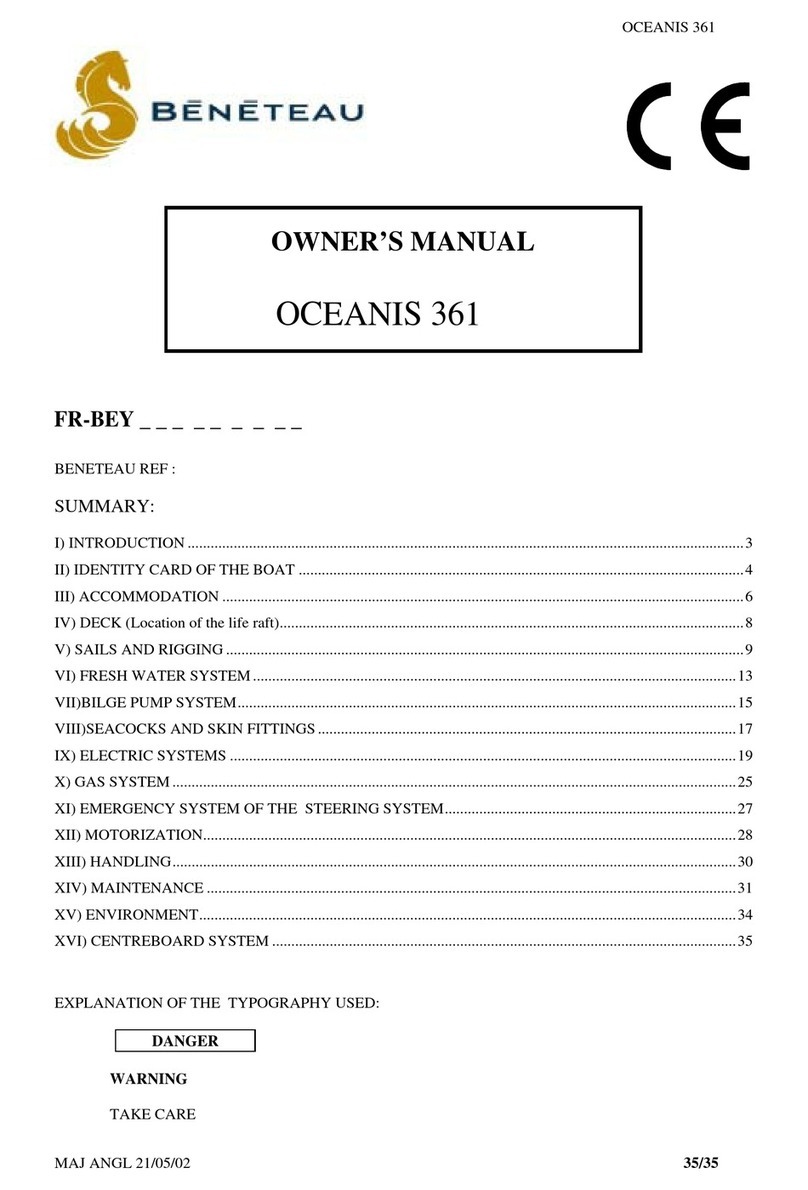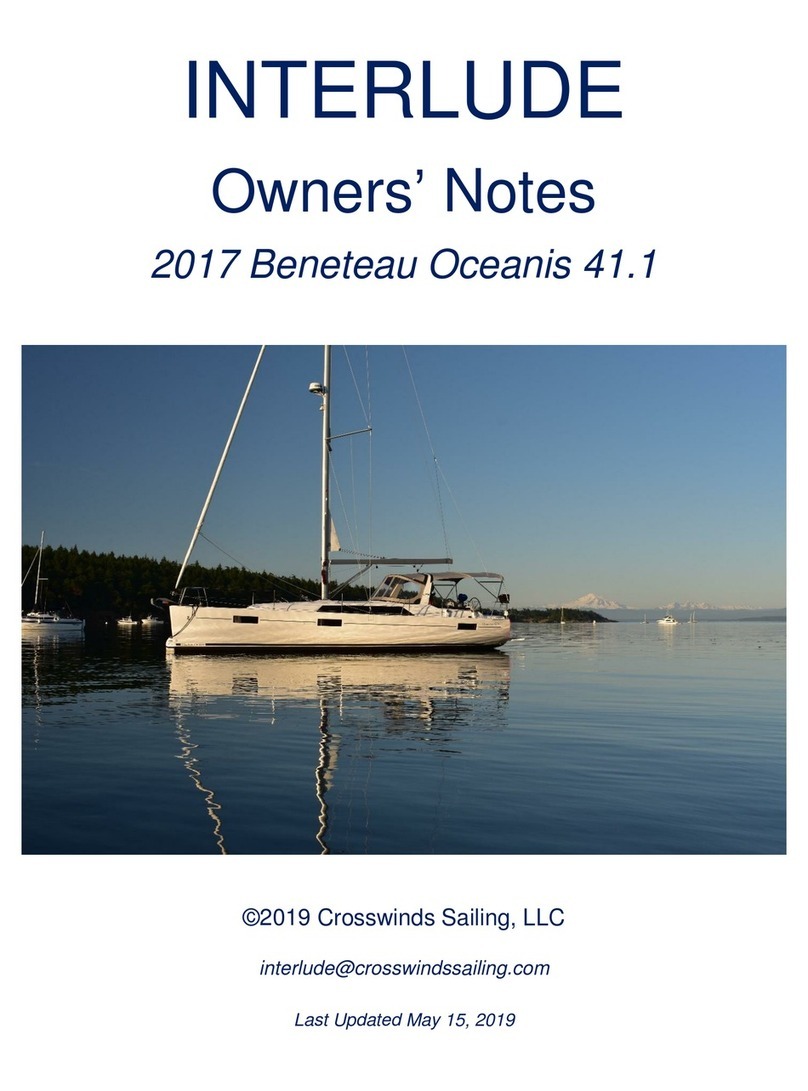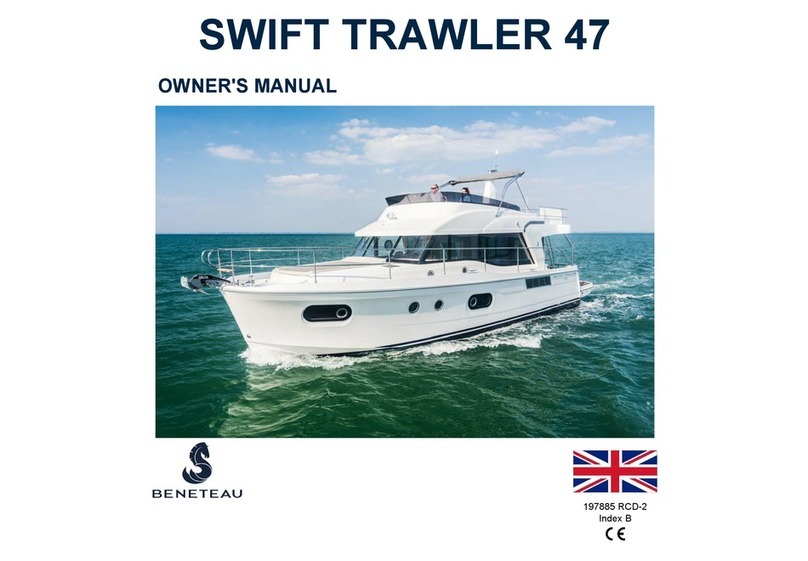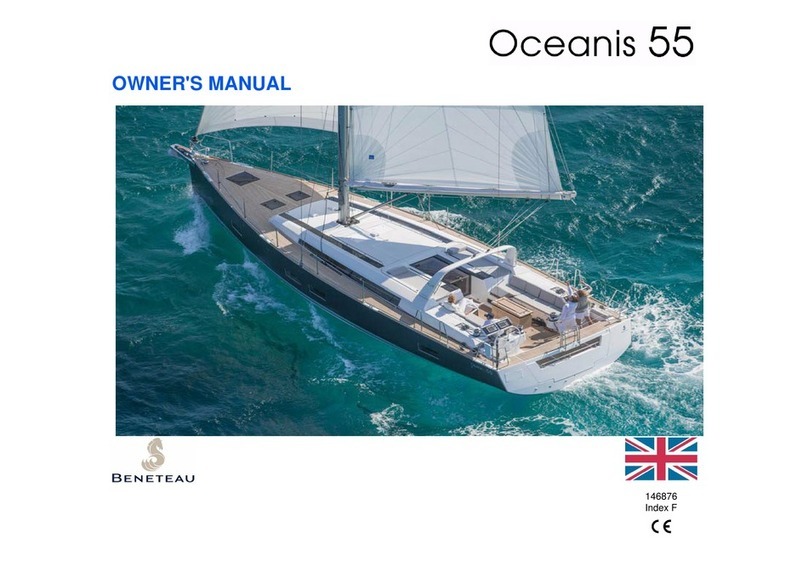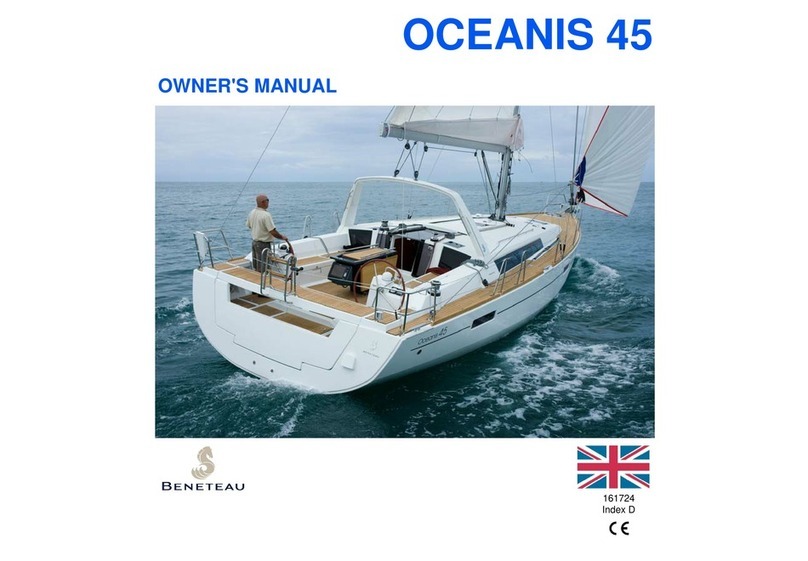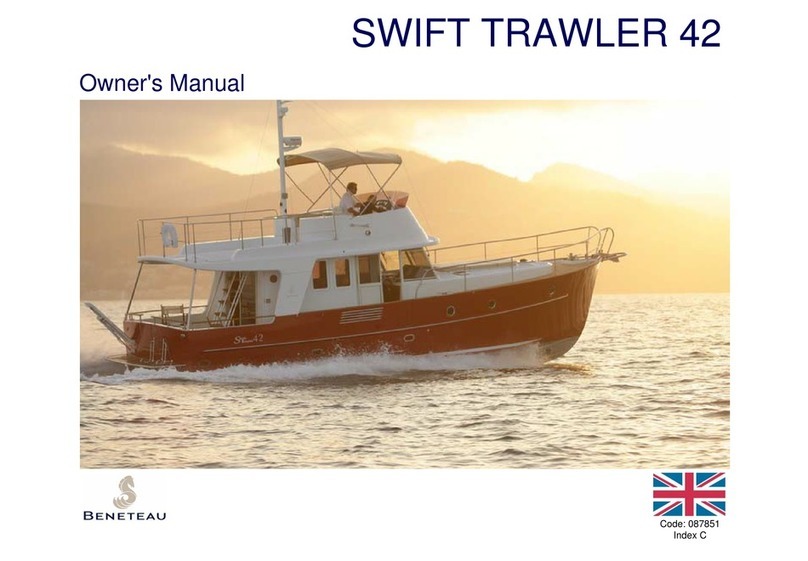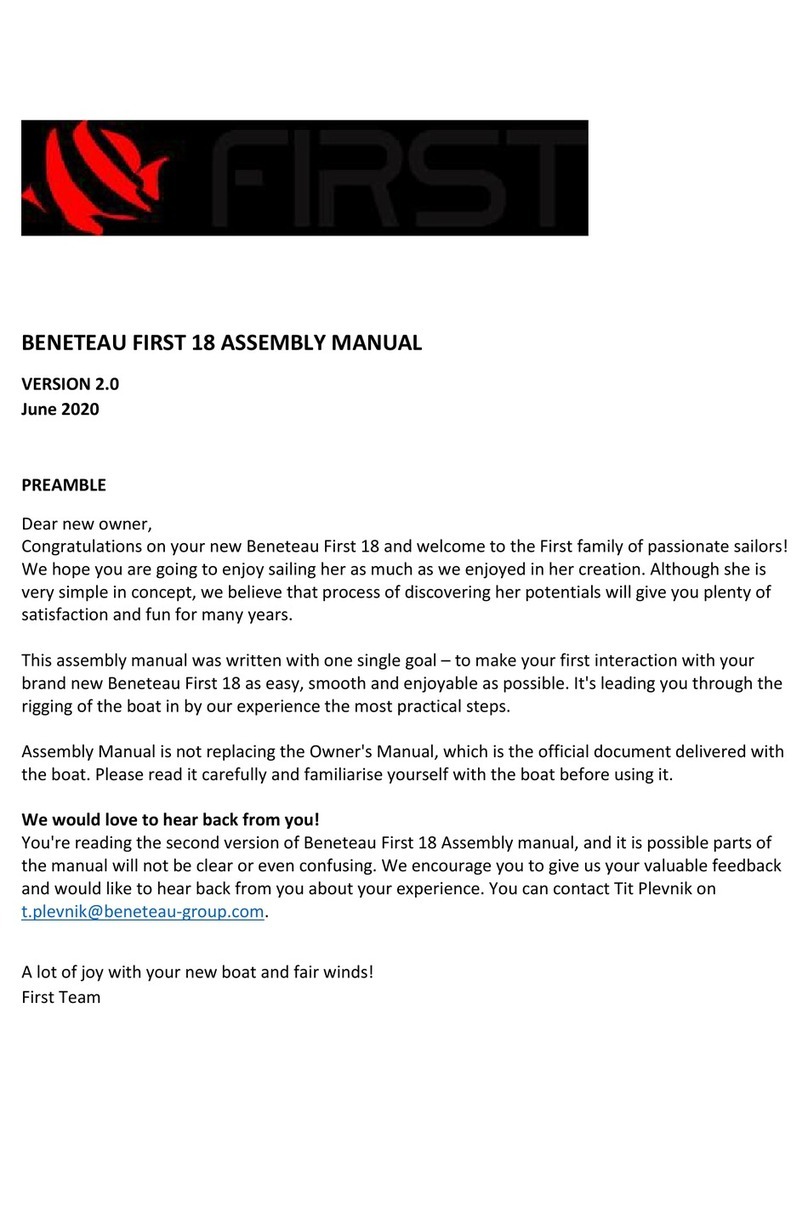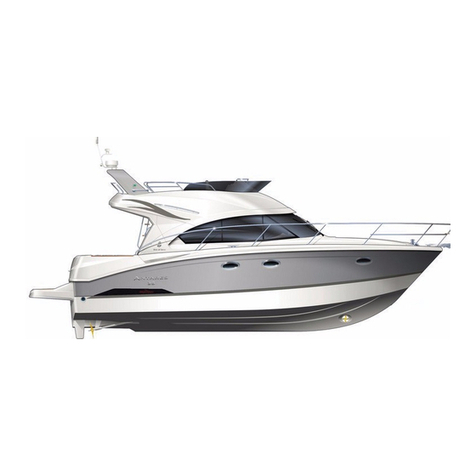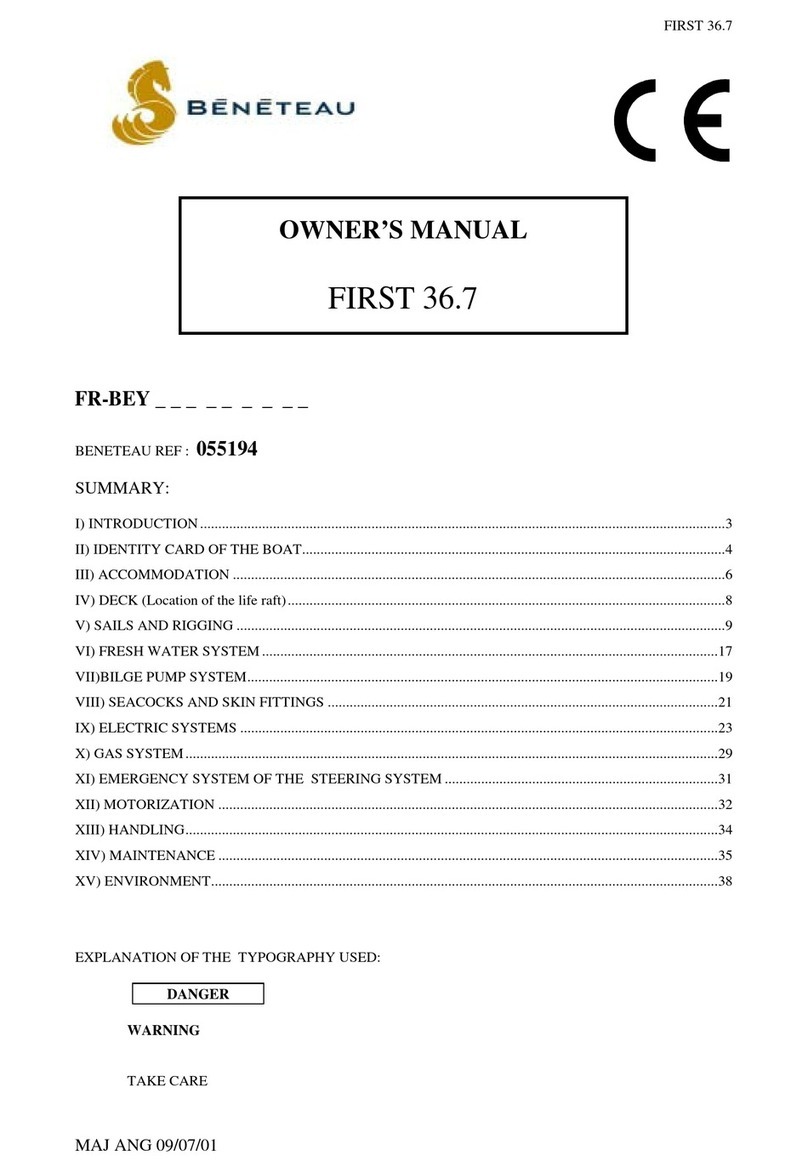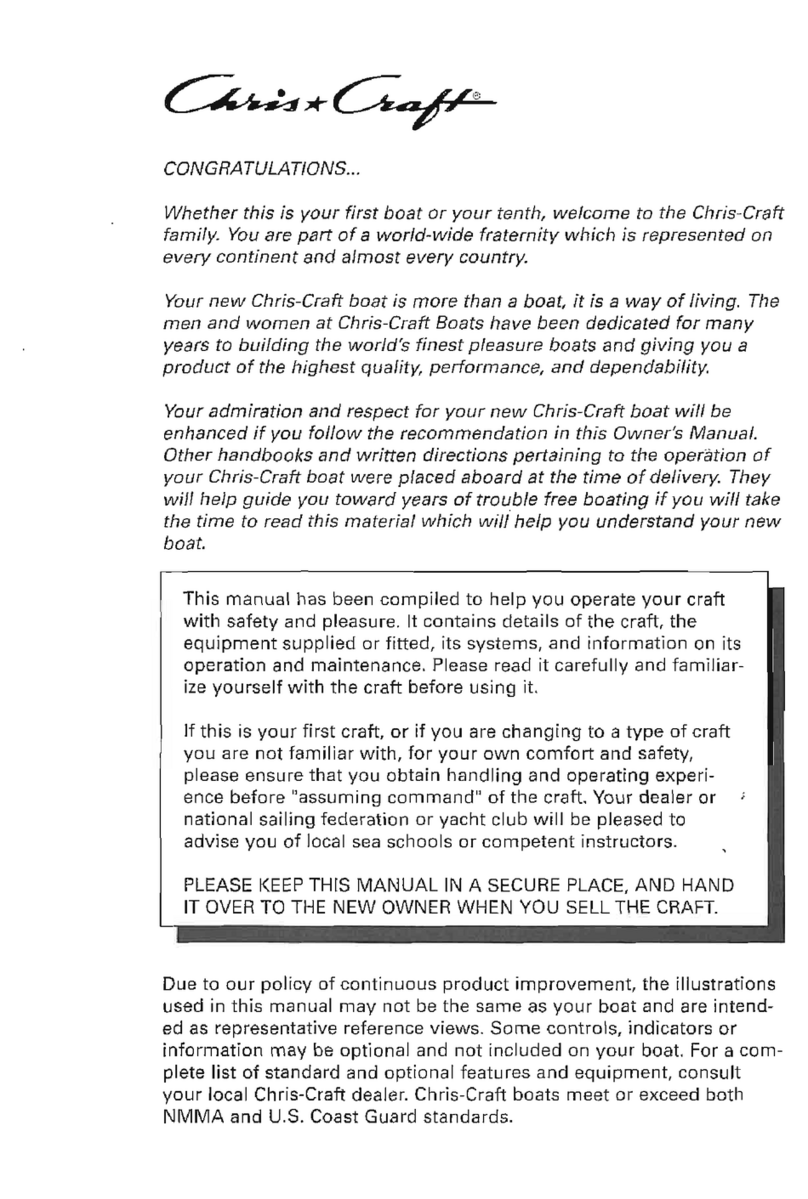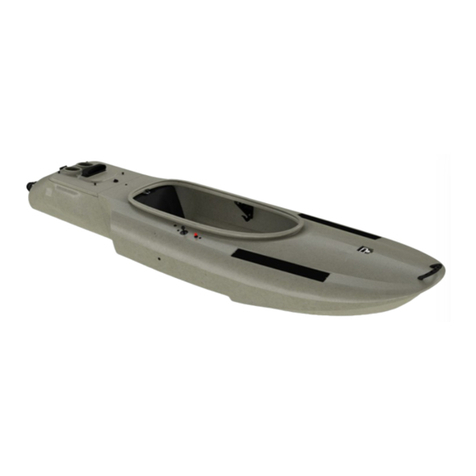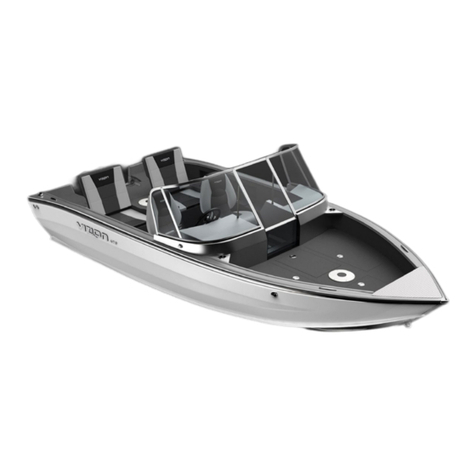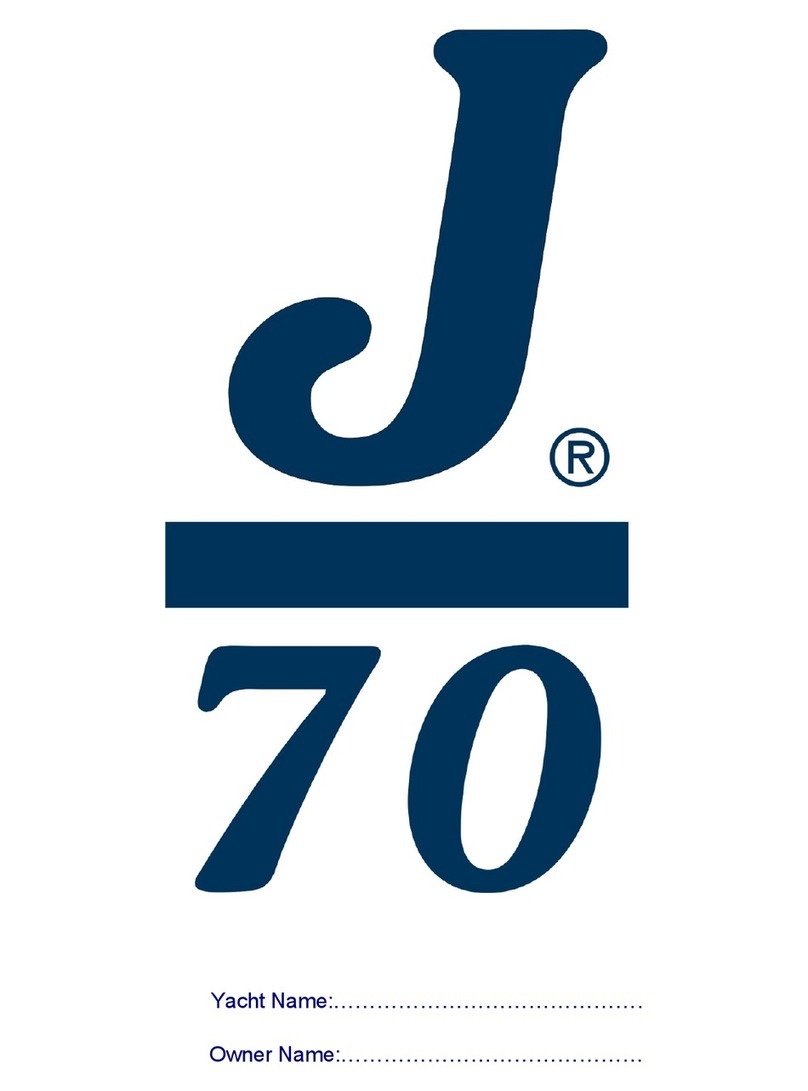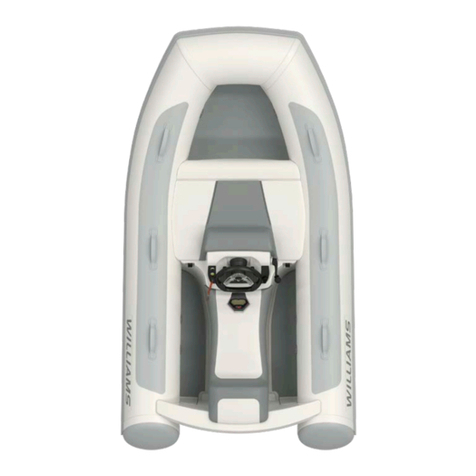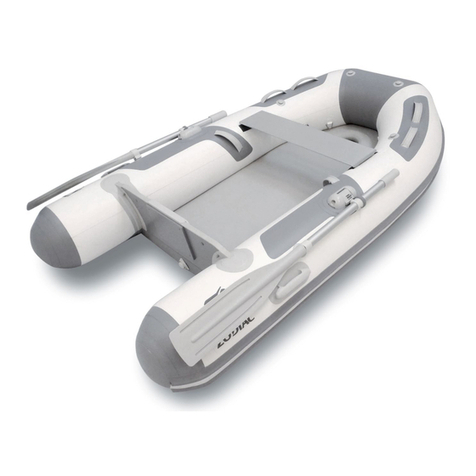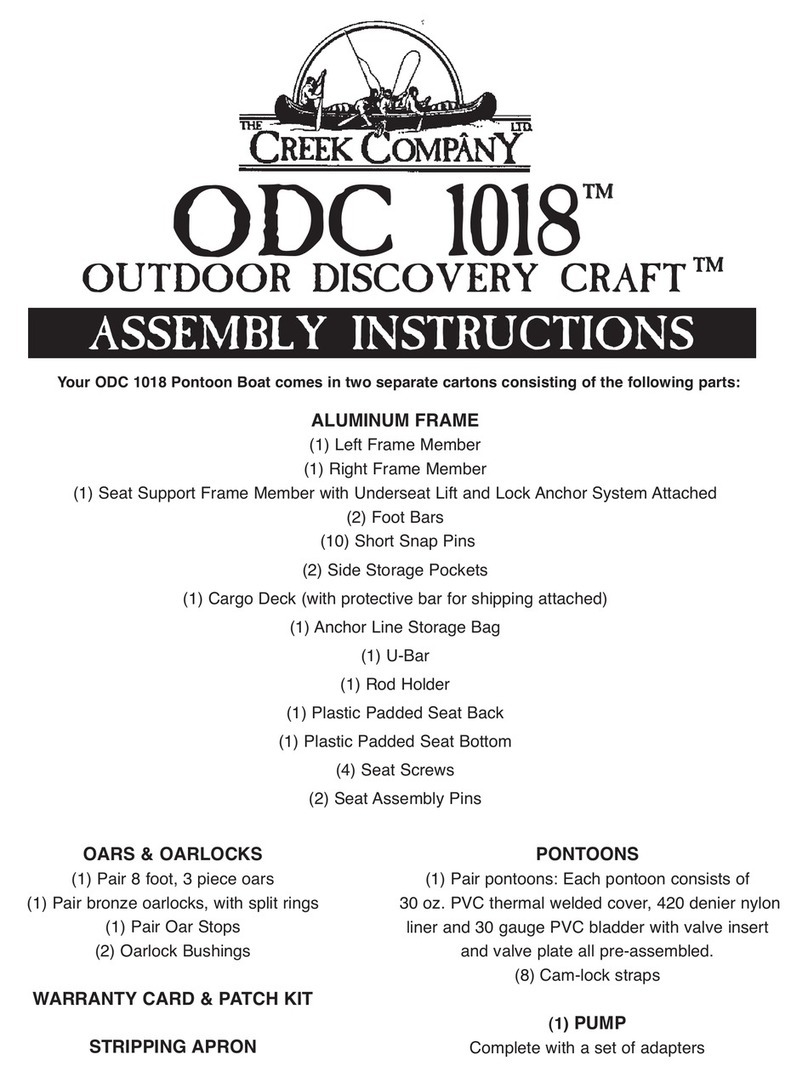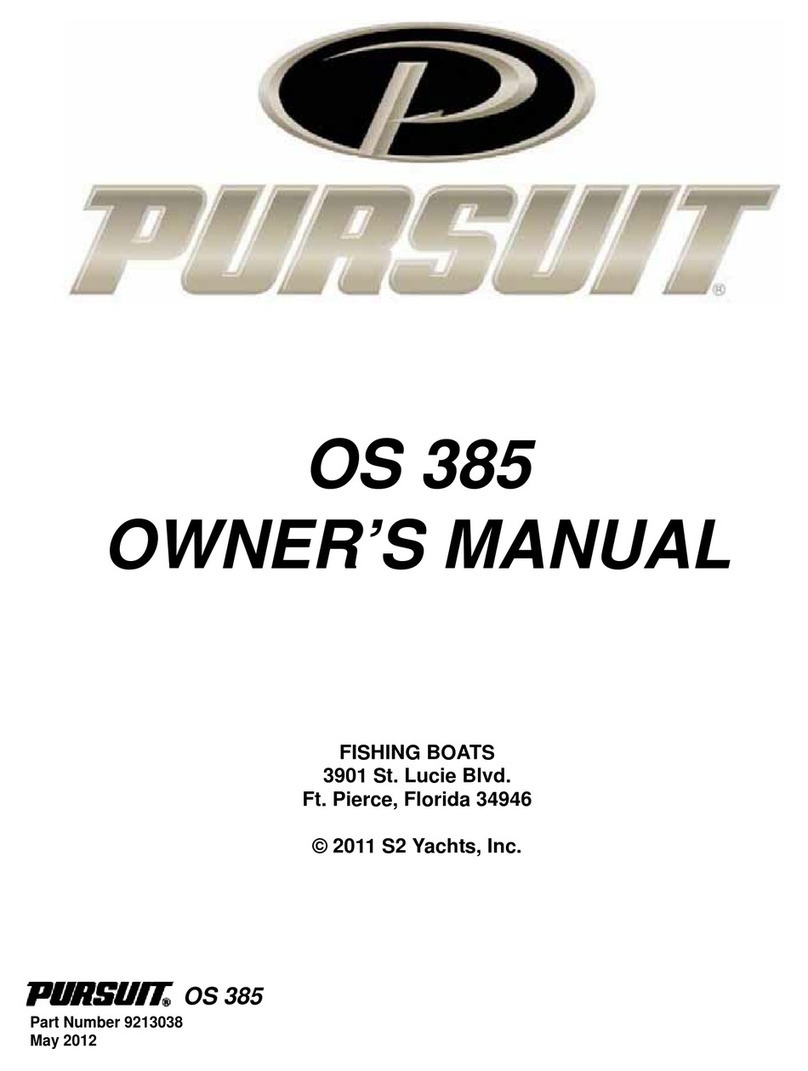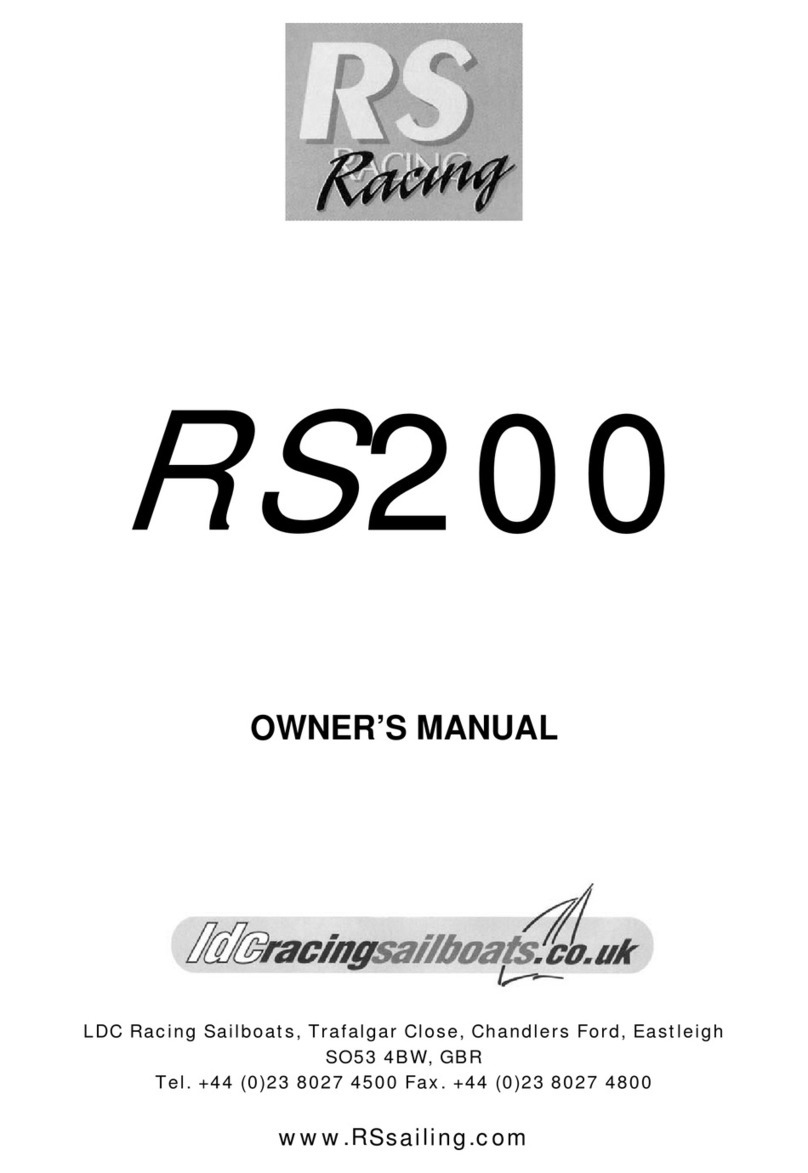
Interlude Owners’ Notes March 2021
3 – 40
INTERLUDE NUANCES
There are a few things about Interlude that are not “typical” and may require special attention or where it may be
best to deviate from customary operating procedures. We’ve listed the most important items here in alphabetical
order to help you plan your charter.
•AC outlets: Besides the AC circuit breaker switch on the electrical panel, there’s a master outlet switch located
under the Nav table. This must be “ON” for the outlets to work. We’ve found it can be turned off accidently
when removing or replacing the VHF remote, which is mounted next to it. In addition to the AC outlets in all the
cabins, there’s an AC outlet hidden behind the sliding panels at the right end of the galley.
•Anchor wash-down pump: If you can hear pump running when you activate the nozzle but no water is
discharged, the system needs to be primed with water. The wash-down pump draws raw water via a Y-valve
from the through-hull inlet used to supple water to the forward head. Add water to the forward head and flush
it, repeat several times. That should prime the wash-down pump and supply water for cleaning the anchor.
•Electric swim platform: The swim platform has a sliding lock bolt located on the starboard end. Press the button
on the bolt and slide it back to unlock. The operating switch for the swim deck is on the starboard helm.
Simultaneously press the red button and toggle the black rocker switch down/up to open/close the platform.
Close the bolt lock to secure the platform in the up position. A remote-control fob to operate the deck when you
go ashore is stored in the Nav table.
•Fuel and water: The access ports for the fuel tank (pink) and the aft water tank (blue, Tank 1) are in the propane
locker. The fill port for the forward water tank (blue, Tank 2) is located on the forward port deck. The caps are
keyed, not screw-in. Use the small winch handle to rotate the caps ¼ turn, then lift off. The valves for selecting
water tanks are in the engine compartment. When you switch tanks, you may hear the water pump running for a
minute or two as it pressurizes the water lines.
•Heads and holding tanks: Both heads are equipped with electric toilets and 20-gallon holding tanks. Pump-out
access ports are on the starboard deck above each head. The caps screw out/in to open/close. Use the small
winch handle to unscrew/screw-in the caps. Please don’t overtighten. Overboard discharge valves are located
beneath a panel in front of the starboard aft cabin hanging locker and in the tilt-out storage locker under the
forward cabin bunk. Discharge holding tanks only where allowed.
•Prop: Interlude had a fixed prop that you will hear spinning when you are sailing when the transmission is in
neutral. This is normal. For sailing speeds below 8 knots, you can have the transmission in reverse to stop the
prop spinning, but only shift in and out of reverse at low speed (~1 kt). Never shift into forward when sailing or
the transmission may be damaged. Also, prop walk is almost non-existent, a bit to starboard in reverse.
•Throttle and saildrive: The transmission for the Yanmar SD-60 Saildrive on Interlude and other boats similarly
equipped has displayed a tendency to slip and not engage immediately if the helmsman shifts gears too quickly
or tries to “goose” the engine too fast. This is most likely to occur when backing out of a slip when the engine
has only been on for a few minutes and not fully warmed up. When shifting from reverse to forward (and vice
versa), proceed slowly and smoothly: pause for 1-2 seconds in neutral (say to yourself “one & two &”), then
shift to idle forward (reverse) and pause again for 1-2 seconds, then smoothly advance the throttle forward
(reverse). Following this procedure should ensure the transmission fully engages as expected. Remember, slow
and smooth is better than fast and jerky! When backing out of a slip or maneuvering in tight quarters, allow
some extra time and distance for the boat to drift backward while following these procedures. You can attach a
roving fender to the stern safety line as an added precaution if you’re maneuvering in tight quarters and don’t
want to bump into something behind you.




















